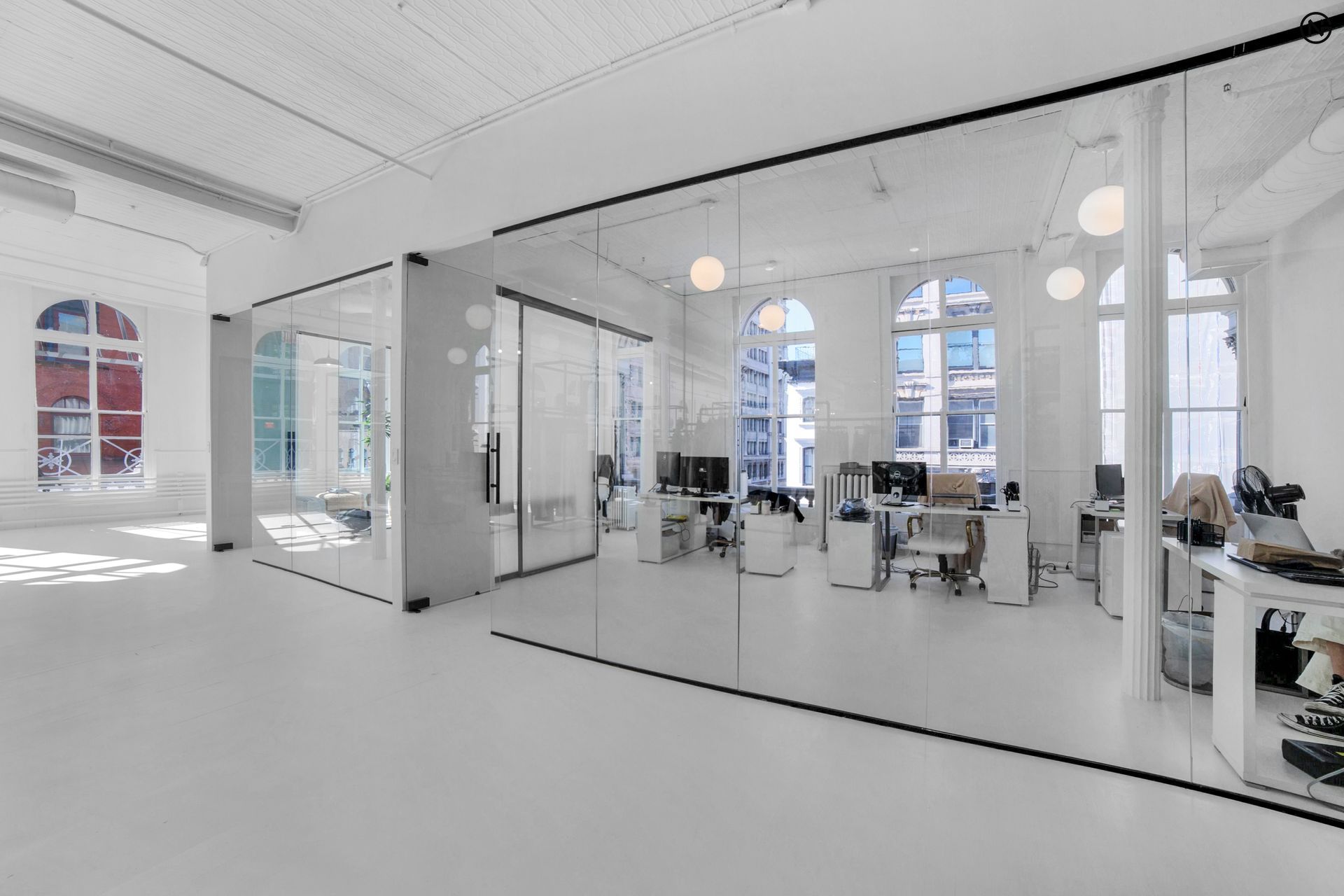NYC’s Unseen Real Estate Drivers: What’s Really Shaping Decisions?
When Pinterest signed their recent lease in NYC, it wasn’t the square footage that tipped the scales. It was the building’s state-of-the-art wellness center, rooftop gardens, and a professional-grade coffee bar that could rival any Brooklyn café. This isn’t an isolated incident. Across Manhattan, a seismic shift is reshaping how companies choose their commercial space for rent, and the traditional metrics of location and size are losing their monopoly on decision-making.
Recent market analysis reveals that 73% of tech companies now rank building amenities above raw square footage when evaluating commercial property for lease. This isn’t just a pandemic afterthought—it’s a fundamental rewiring of what makes real estate valuable in America’s most competitive market.
The New Decision Matrix: Beyond Location, Location, Location
For decades, NYC commercial real estate operated on a simple formula: prime location plus adequate space equals success. But today’s high-growth companies are rewriting the playbook. The real drivers of leasing decisions now include factors that barely registered on radar screens five years ago.
Technology Infrastructure: The Invisible Dealmaker
While brokers tout corner offices and natural light, CTOs are asking different questions: What’s the building’s fiber optic capacity? Can the HVAC system integrate with our employee wellness apps? Is there infrastructure for EV charging?
These aren’t nice-to-haves anymore. Properties with advanced technology integration command 15-20% premium rents and achieve tenant retention rates 40% higher than traditional spaces. Smart building features—from touchless entry systems to AI-powered space optimization—have become table stakes for attracting innovation-driven companies.
As reported by Commercial Observer, buildings with integrated smart systems are now being treated with the same importance as fire safety systems in new developments. This shift reflects how deeply technology has become embedded in commercial real estate infrastructure decisions.

The Amenity Arms Race: When Perks Become Performance
The most successful NYC office buildings today function less like traditional workspaces and more like hospitality experiences. But this isn’t about ping-pong tables and beer taps. The amenities driving real decisions focus on productivity, wellness, and flexibility:
Wellness Infrastructure
- Air quality monitoring systems with real-time dashboards
- Circadian lighting that adjusts throughout the day
- Meditation rooms and quiet zones for deep work
- Fitness centers that rival boutique gyms
Productivity Amplifiers
- Professional podcast studios for content creation
- Multiple meeting room configurations with enterprise-grade AV
- Phone booths for private calls (averaging 1 per 20 employees)
- Outdoor terraces that function as working spaces
Community Builders
- Curated networking events with other building tenants
- Shared innovation labs and maker spaces
- Food halls that eliminate the “where should we eat?” friction
These amenities aren’t just recruiting tools—they’re retention engines. Companies report 25% lower turnover when employees feel their workplace actively supports their wellbeing and productivity.

Flexibility: The New Non-Negotiable
The days of signing 10-year leases for fixed footprints are fading fast. Today’s growth companies demand optionality, and landlords who provide it are winning the war for premium tenants.
What Flexibility Really Means
Spatial Flexibility
- Ability to expand or contract within the building
- Access to swing space for project teams
- Convertible layouts that adapt to changing needs
Term Flexibility
- Shorter base terms with multiple renewal options
- Right-sizing clauses tied to headcount
- Sublease rights that don’t require extensive approvals
Financial Flexibility
- Graduated rent structures aligned with growth projections
- TI allowances that can be applied to technology infrastructure
- Amenity packages that scale with company size
This flexibility premium is real: companies are paying 10-15% more for leases that provide genuine optionality. For high-growth businesses, that premium pays for itself by eliminating the friction of constant relocations.
According to Commercial Observer, location and timing flexibility are emerging as competitive advantages in the NYC office market. Buildings near transit hubs like Grand Central Terminal and Penn Station are outperforming others in both return-to-office compliance and leasing velocity.
The Neighborhood Ecosystem: It’s Not Just About the Building
While individual buildings compete on amenities and flexibility, the surrounding neighborhood ecosystem has become equally crucial. The most successful areas create virtuous cycles that benefit all stakeholders:
Talent Accessibility
- Proximity to multiple transit lines (not just subway)
- Bike infrastructure and micromobility options
- Walkable access to where employees actually live
Business Synergies
- Concentration of complementary businesses
- Proximity to clients, partners, and investors
- Access to industry-specific resources and events
Cultural Vibrancy
- Authentic food scenes (not just chains)
- After-work destinations that foster team building
- Green spaces for mental health breaks
Neighborhoods that nail this trifecta—like the Flatiron District—command premiums that exceed traditional “Class A” locations in Midtown.
Data-Driven Decision Making: The New Reality
Perhaps the biggest shift in NYC commercial real estate is how decisions get made. The gut-feel approach has given way to sophisticated analytics that consider dozens of variables:
Employee Commute Analysis
- Heat maps showing where team members live
- Multi-modal commute time calculations
- Projected impact on retention and recruiting
Productivity Modeling
- Space utilization predictions based on work patterns
- Collaboration frequency between departments
- Cost per productive hour calculations
Culture Fit Scoring
- Alignment between building amenities and company values
- Demographic match with other tenants
- Brand reinforcement through physical space
Companies using data-driven approaches report 30% faster decision-making and 50% higher satisfaction rates one year post-move. The tools exist—the question is whether decision-makers will embrace them.
The Hidden Costs of Getting It Wrong
While the upfront costs of premium amenities and flexibility might seem steep, the hidden costs of choosing wrong are far higher:
- Talent Loss: Average cost of replacing an employee: $50,000-$200,000
- Productivity Drain: Suboptimal spaces reduce output by 15-20%
- Relocation Costs: Moving every 3-5 years vs. growing in place
When you factor in these hidden costs, paying 20% more for the right commercial building for rent often delivers 200% ROI through improved retention, productivity, and growth.
What This Means for Landlords and Tenants
For Landlords:
The message is clear: compete on value, not just price. Properties that invest in technology, flexibility, and meaningful amenities will command premium rents and achieve higher occupancy. Those that don’t will struggle to attract quality tenants, regardless of location.
For Tenants:
Look beyond the surface. That cheaper space in a Class B building might cost you far more in lost productivity and talent than paying up for a space that actually works. Use data to make decisions, and don’t be afraid to demand the flexibility your business needs.
The Future Is Already Here
The transformation of NYC commercial real estate isn’t coming—it’s here. Forward-thinking companies are already leveraging these insights to gain competitive advantages through their real estate decisions. The question isn’t whether these factors matter, but how quickly the rest of the market will catch up.
As industry experts have noted, the key question now being asked is: “What features and amenities make an office building ‘commute-worthy’ in today’s hybrid world?”
For high-growth companies, the implications are profound. Your office space isn’t just overhead—it’s a strategic asset that can accelerate or inhibit your growth. Choose wisely, and your commercial real estate for lease becomes a competitive advantage. Choose poorly, and you’ll spend the next five years explaining to recruits why your offices don’t match your ambitions.
Taking Action: Your Next Steps
Ready to find a commercial property for lease that actually drives your business forward? Don’t let outdated thinking about real estate hold your company back. The new rules are being written right now, and the companies that understand them will thrive. Those that don’t? They’ll wonder why their competitors keep landing the best talent and growing faster, never realizing their office space was working against them all along.
Further Reading & Resources
- Midtown South Drives Strong Manhattan Office Leasing – Commercial Observer
- Exploring NYC’s Tale of Two Office Markets – The Real Deal
- Nomad Group
Let’s elevate your workspace—and your future.
Partner with Nomad Group for expert guidance, full-scale support and an enjoyable experience that prepares your team for a thriving future.
Get started
Featured resources
From commercial real estate fundamentals to extensive reports, stay in the know with Nomad Group’s insights, strategies and expert perspectives on office leasing.
Explore resources

Customers Over Everything: Ditch the Short-Term Profit Trap & Build Durable Growth
By Matthew DeRose – CEO, Nomad Group In hip‑hop, “Money over everything” might be a flex. In business, it’s a…

From Flex to Flagship: Knowing When to Make the Move
By Matthew DeRose – CEO, Nomad Group Coworking vs. Private Office Space: What CEOs Should Really Be Thinking About When…

